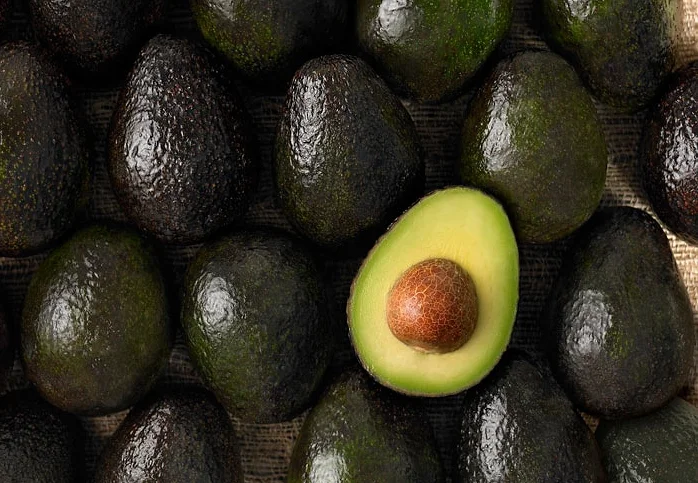The Corn Identity

The Corn Identity
This Monday is Memorial Day, the unofficial start to summer, and what says summer in America more than fresh corn on the cob? But there's a lot of miscornceptions out there! Let's peel back the layers...
The Current Pickle
While the United States is the world's largest producer of corn, devoting more farmland to corn than any other crop (and shocking NASA with its photosynthesis during corn season), only a small percentage of that corn is for human consumption in America. Here's how it breaks down:
- 40% of the U.S. corn crop is processed into ethanol for use as engine fuel
- 37% goes to livestock feed
- 11% is made into processed food ingredients like corn flour, corn syrup, corn starch and cooking oil
- 11% gets exported
The sweet corn we know and love -- on the cob, in creamed corn, in summer salads -- represents less than 1% of American corn production.
Because today’s cornfields are grown in huge monocultures (more about that in another Pickle), they are particularly vulnerable to pest infestations, and modern farmers often resort to chemical herbicides, insecticides and fungicides -- to the tune of around 300 million pounds (just counting the active ingredients!) per year. ๏_๏
Regarding those chemicals sprayed on corn:
- Your digestive system is safe -- the thick husk protects corn kernels, and few pesticides show up as contaminants on kernels that would be eaten by people and animals.
- Your environment isn’t -- even though pesticides don’t show up in your frozen corn or corn on the cob, the most common pesticide used on corn (Monsanto’s Roundup, chemical name glyphosate), has been found by scientists to harm soil microbial communities, aquatic organisms, beneficial insects (like our precious bees!), birds and mammals, not to mention contaminate waterways. And this is a huge deal considering cornfields cover over 90 million acres across America.
Some 90% of the American field corn crop is genetically engineered to resist herbicides or to kill pests, and therefore corn-based sweeteners, starches and oils in processed foods are almost guaranteed to be made from genetically engineered (“GE” or “GMO”) corn.
OMG so what do I eat?! Surprisingly, most sweet corn has not been genetically engineered. Eating organic or conventional corn on the cob is Pickle-approved!
What’s the Dillio with Choosing Corn?
Which one is sweetest: Yellow, white, bicolor? Trick question! Color actually reveals nothing about the sweetness of corn, which is actually determined by corn’s genetic type and growing conditions.In terms of genes, there are three basic sweet corn gene types in order of increasing sweetness:
- sugary,
- sugar enhanced, and
- supersweet.
There’s also a mix of all three genes, called triplesweet or multi-gene – this baby boasts next-level flavor, texture, and sugar retention. If this is your bag, keep your eyes peeled for Mirai, a cult favorite at farmers’ markets, especially in the Midwest.
Peeling & peeking – shopping faux pas? Depends on the market, but since peeling back the husk exposes the kernels and therefore makes them dry out faster, this practice generally won’t win you any friends. We turned to our friends at Food52 for tips on choosing without peeking:
- Check out the husk. It should be bright green, tightly wrapped around the cob, and possibly damp. Avoid the wormholes, which are teensy brown holes in the husk, especially towards the top.
- Feel the kernels through the husk. Make sure that they're plump and plentiful; there should be an gaps between them.
- Look for tassels (the parts of the “silks” sticking up out of the top) that are brown and sticky to the touch. If they're dry or black, then it's an old ear of corn. (btdubs, if you don't know about detasseling, educate yourself on this fascinating part of life in the corn belt)
Ok, corn has been bought-en! Now what?
Storage. To prevent fresh corn from drying out, store the ears (husk intact) wrapped tightly in a plastic bag in the fridge. If you don’t plan on eating your corn within three days—and you should unless you like mouthfuls of starch—freeze it.
Cookage. For Memorial Day at least, let’s all agree that grilling is the most festive and fun method. The good folks at Serious Eats found that grilling wrapped in husks or foil yielded juicy corn, but grilling the corn cobs straight on the grates provided the most flavor. Check out their write up here for more details and recipes.
More Cookage. If you’re not firing up the Barbie but still want to have your corn and eat it too, try one of these recipes out:
- Boiled (with recipes for fun flavored butter!)
- Oven roasted (this may be the easiest method we’ve ever seen!)
- Microwaved (our “last resort” method, but hey, you do you!)
The Hot Pickle
Since the craze of the Unicorn Frappucino erupted, it was only a matter of time until uniCORN …well, corn... became a thing. Check out the beautifully colorful corn on the cob here, and let us know if you recreate this at home!
PS – baby corn, unlike baby carrots, ACTUALLY ARE babies -- toddler versions of their adults selves. Most of those kiddos are packed and shipped from China, but you can also grow your own!










